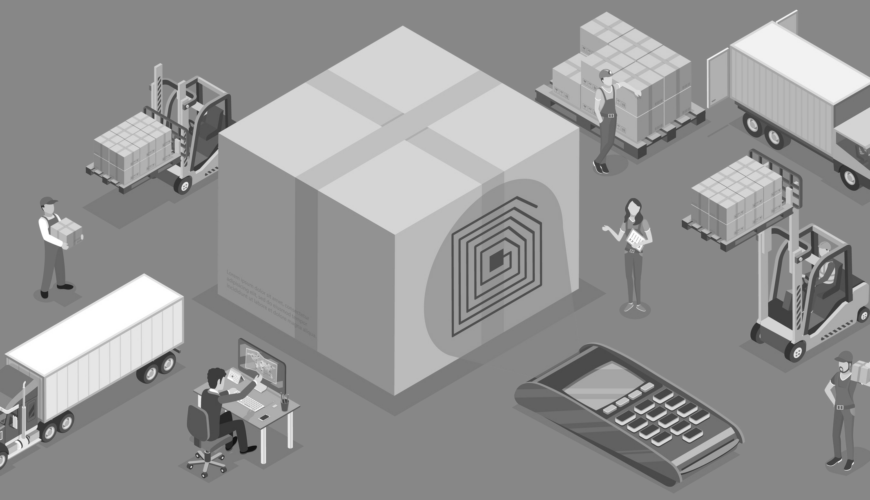Radio-frequency identification (RFID) and barcodes are ubiquitous technologies in automatic identification and data capture (AIDC). While RFID has gained significant traction in various industries, suggesting it might replace barcodes entirely, a closer examination reveals that each technology serves distinct purposes. This article explores the differences between RFID and barcodes and scenarios where barcodes excel over RFID.
RFID and Barcodes: Understanding their Roles and Applications
RFID technology uses electromagnetic fields to identify automatically, and track tags attached to objects. These tags contain electronically stored information that can be read from a distance using RFID readers. In contrast, barcodes are graphical representations of data that can be scanned by optical scanners, translating the pattern into readable information.
Advantages of RFID
RFID offers several advantages over barcodes, including:
- Automatic Reading: tags can be read automatically without line-of-sight, allowing faster and more efficient data capture.
- High Capacity: tags can store more information than barcodes, making them suitable for extensive data storage applications.
- Durability: tags are more durable than barcodes as they are not susceptible to wear and tear from environmental factors or handling.
- Multiple Reads: tags can be read simultaneously, enabling the tracking of multiple items in a single scan.
Despite these advantages, there are several reasons why RFID will never fully replace barcodes.
Cost -One of the primary barriers to widespread RFID adoption is cost. While the tags have decreased over the years, they are still more expensive than barcode labels. Additionally, the infrastructure required for RFID, including readers and antennas, can be costly to implement and maintain.
Compatibility – Many businesses have invested heavily in barcode systems, including scanners and software. Switching would require significant capital investment and may not be feasible for organizations with existing barcode-based workflows.
Line-of-Sight Limitation – RFID does not require line-of-sight for reading tags, but it is not always suitable for all environments. Metal and liquid surfaces can interfere with RFID signals, challenging the implementation of RFID in specific applications.
Privacy Concerns – RFID technology raises privacy concerns due to its ability to track objects and individuals without their knowledge or consent. This has led to consumer resistance and regulatory scrutiny in some industries.
Limited Read Range – Despite advancements in RFID technology, the read range remains a limitation. Passive RFID tags typically have a read range of only a few meters, which may not be sufficient for some applications.
Barcodes: The Unsung Hero
While RFID offers several advantages, barcodes still remain the preferred choice for many applications due to their simplicity, reliability, and cost-effectiveness.
- Point-of-Sale
Barcodes are the standard for product identification and inventory management in retail environments. They are inexpensive to produce and can be easily scanned at checkout counters using barcode scanners.
- Product Labeling
Barcodes are commonly used for product labeling and packaging due to their simplicity and ease of printing. Manufacturers can print barcodes directly onto packaging materials, reducing the need for additional labels or tags.
- Asset Tracking
Barcodes are ideal for asset-tracking applications, such as tracking equipment in hospitals or warehouse inventory. Barcoded assets can be quickly scanned using handheld scanners, providing real-time visibility into their location and status. - Library Systems
Libraries have long relied on barcodes to catalog and track books and other materials. Barcoded library cards and book labels simplify the checkout process and help prevent theft and loss. - Healthcare
Barcodes are used in healthcare settings for patient identification, medication administration, and inventory management. Barcoded wristbands and medication labels help ensure patient safety and accuracy in medication dispensing.
While RFID offers numerous advantages over barcodes, including automatic reading, high capacity, and durability, it will never fully replace barcodes. Barcodes remain the preferred choice for many applications due to their simplicity, reliability, and cost-effectiveness. Understanding the strengths and limitations of each technology is crucial for selecting the most suitable solution for specific use cases. In many scenarios, the humble barcode remains the unsung hero of automatic identification and data capture.
Contact OPSdesign today. Our cross-functional team of seasoned supply chain operations leaders, warehousing, distribution and e-commerce subject matter experts, and tech-savvy engineers/analysts allows us to seamlessly blend the art and the science to deliver flexible, scalable, and extraordinarily efficient supply chain operations.


